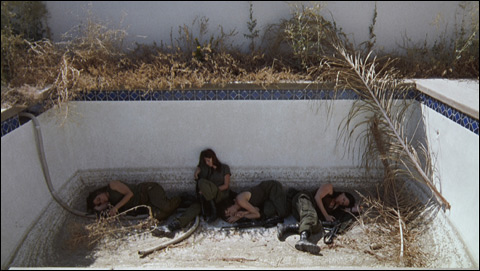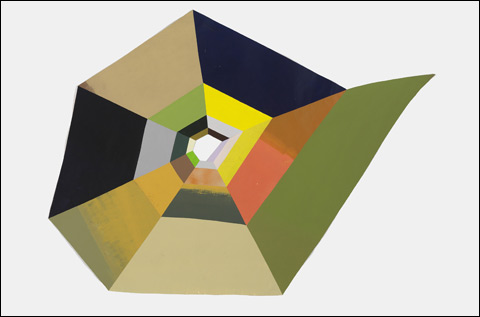
BLACK MOON: How can the judges resist Amie Siegel’s combination of Harvard and exploitation film? |
| “2010 Foster Prize” | Institute of Contemporary Art, 100 Northern Avenue, Boston | Through January 17 |
When I roam Boston galleries or stumble upon Brandon Nastanski's "
Unofficial Franklin Park Research Outpost," I feel the buzz of potential. And when I see things like the awesome and witty Museum of Bad Art, I'm reminded that there are unique, trendsetting organizations in our midst. But a show like the Institute of Contemporary Art's Foster Prize round-up of "Boston-area artists of exceptional promise" breaks my heart. It can make you suspect that deep down you hate Boston art, when in reality the problem isn't you, it's the ICA.
Too often, when local art professionals get involved, the wildcat excitement gets ironed out and combed over and turned into a yawn. Too often, this is the face such exhibits promote. You might as well take out an ad in the New York Times saying, "Boston art is dull. For your own safety, stay far away."
This year, the ICA expanded the biennial prize's exciting reality-game-show format from four artists to nine, as selected by ICA staff wrangled by associate curator (and former Phoenix contributor) Randi Hopkins. A jury of three — Laura Hoptman, senior curator at the New Museum in New York; Claudia Schmuckli, director of the Blaffer Art Museum at the University of Houston; and New York sculptor Chakaia Booker — will pick the $25,000 winner; the announcement will be made in December.
I'm betting they'll pick Harvard professor Amie Siegel, whose surreal, 20-minute, B-art-movie, Black Moon, has women in fatigues armed with rifles running around abandoned suburban housing developments in a mountain valley. Sharply filmed and not too long, it echoes the housing crash, war in Afghanistan, global warming, and the 1984 Patrick Swayze film Red Dawn, in which the Soviets overrun Colorado. (The ICA says Siegel is actually alluding to Louis Malle's surreal 1975 war-between-the-sexes film, Black Moon. Oh well.) I'm not saying that the judges will pick Siegel because her fun film was my favorite thing in the show. I just don't see how they can resist a Harvard exploitation movie.

SPIRAL: Matthew Rich’s subtle cut-paper-and-paint geometric abstractions are handsome, but awfully polite. |
If it's not Siegel, then my money's on Matthew Rich, who's gotten a lot of attention in town over the past year. His flat, subtle, cut-paper-and-paint geometric abstractions create illusions of depth by combining '60s Frank Stella with the crystal patterns designers love these days. They're handsome, but awfully polite. The wild card is Stephen Tourlentes, whose New Topographics–style midnight photos of prisons glowing under spotlights at the edge of towns can speak to how we push the prison system to the edge of our consciousness. But I'd argue that such ruminations are more around these photos than in them.
The rest of the work — Evelyn Rydz's drawings of beach trash, Fred H.C. Liang's giant lacy cut-paper design, Eirik Johnson's photos and sound recordings of the Amazon, Robert de Saint Phalle's non sequitur installations, Rebecca Meyers's mood films, and Daniela Rivera's poorly painted cloud with rug-and-splatter pattern — is serious and professional but unremarkable.